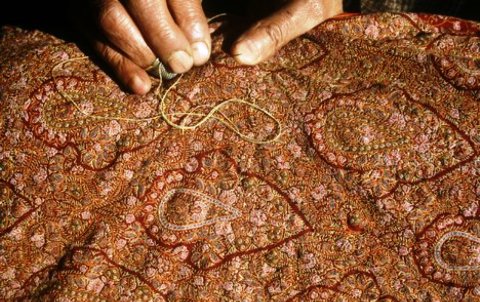The Indian subcontinent is often believed to be the original home of cotton, where it is thought to have started in the agricultural era about 8000 years ago. The term Khadi refers to hand-spun and hand-woven cotton fabrics, though the formal use of this word started much later after the advent of Mahatma Gandhi on the Indian scene. There are two reasons that Gandi vigorously advocated Khadi. Poverty was rampant in colonial India, many families especially in the sub-urban and rural areas were compelled to go to bed empty stomach; Gandhiji found a way to help such poor people by educating them to weave Khadi. At the same time, he launched a hugely successful campaign of using Khadi in place of clothing imported from Britain. This transformed the economies of the poor artisans. Who now without investing a penny could start weaving Khadi and feed their families. Even today the scenario is no different; Khadi weaving does contribute to the rural and poverty ridden people’s economy in a significant way. Spinning and producing Khadi has helped numerous families to live with dignity. Khadi has been found to be a unique instrument to promote communal harmony and religious tolerance.
Gandhiji had said that wearing Khadi was like wearing freedom. Persons who possess qualities of simplicity and contentment often wear Khadi. Weavers of Khadi can produce and earn independently. Gandhiji saw Charkha not only as the savior of India, but of the whole world and the basis of new world order.
Nowadays the popularity of Khadi is on the rise. With better weaving techniques and instruments the quality of finished Khadi cloth has improved to such an extent that it has found place in the collections of internationally renowned fashion designers. Once the sign of freedom, Khadi today holds its own on the fashion scene.. it is a part of every wardrobe when it comes to selecting fabric with a discerning eye. Just imagine a cloth 15 meters long, passing through an ordinary finger ring and weighing merely 10 gms per sq.mt. Cloths for special occasions are being designed by designers all over world using Khadi as fabric. Khadi was used in some of the costumes for the Star Wars prequels, such as Mace Windu’s (Samuel L. Jackson) attire.
“Khadi is not a product, it is a Philosophy”, these words of Gandhiji have stood the test of time. The rediscovery of the charkha has brought in a new economic thinking for Indians. It has given new life to the individual made him more resourceful and self dependent. Making khadi a real symbol of democracy in the true sense. Khadi, however, can no longer be sold on an emotional level. A new approach has to be adopted for the new generation who are unaware of its original implications. It will be worthwhile for the young and trendy generations of the 90s to discover the beauty of khadi and support is as a fabric of our tradition.
Khadi production is eco-friendly and does not need electricity, chemicals or petroleum products for its production.


